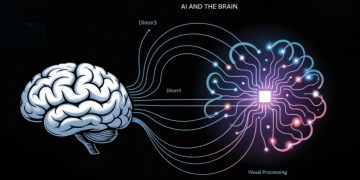In 2017, eight Google computer scientists unleashed the Transformer algorithm upon the world through their seminal paper “Attention Is All You Need,” igniting a new wave of artificial intelligence (AI) innovation. That same year, China charted its course towards AI dominance with the rollout of the “New Generation AI Development Plan,” marshaling national resources to stay at the forefront of this technological race. Today, China stands firmly among the global elite, thanks to these strategic moves.
As we approach 2024, the global competition for general-purpose AI (GPAI) escalates into a systemic battleground, with GPT still burning bright and Sora emerging as a formidable new contender. A new technological revolution looms large, with the United States leading the charge. The question of where China stands in this race, and how the gap can be narrowed, has captured the attention of the entire society and emerged as a hot topic during this year’s National People’s Congress and Chinese People’s Political Consultative Conference (NPC & CPPCC).
Acknowledging Achievements, Confronting the Gap
AI has once again taken center stage during the NPC & CPPCC sessions, with over 20 national representatives and political advisors discussing the intricacies of large models, spanning the spectrum from underlying data computing power to model layers and applications. Notably, Liu Qingfeng, Chairman of iFLYTEK and a national representative, garnered significant attention with his proposal on reducing the GPAI gap between China and the United States.
While acknowledging China’s quantitative prowess in large models—with 130 domestic models as of July 2023, exceeding the U.S. ‘s 114—it’s crucial to recognize the qualitative shortcomings. The majority of China’s “hundred-model war” contestants are industry-specific or vertical applications, with relatively few general-purpose models. These latter ones hold the key to AI’s true might, as they enable broad applicability across diverse tasks and sectors. Without them, industry models risk becoming obsolete in the face of advancements in general-purpose models like GPT-4/4V.
iFLYTEK’s Spark: A Beacon of Chinese AI
Amidst this landscape, iFLYTEK’s Spark Cognitive Large Model V3.5 stands as a testament to China’s AI prowess. As the country’s first nationally trained and fully open large model, Spark V3.5 boasts language comprehension and mathematical capabilities surpassing GPT-4 Turbo, with code generation close at 96% and multimodal understanding at 91% of GPT-4V’s level. Liu Qingfeng confidently predicts that Spark can match GPT-4/4V’s current prowess within six months but acknowledges a potential year-long setback upon GPT-5’s release. Concerted efforts in computing power, data, and model training could bridge this gap within 1-2 years.
Systematic Advancement: A National Endeavor
China’s AI journey faces two formidable challenges: colossal investments and U.S. sanctions. The exponential growth in model parameters and training costs—from 12millionforGPT−3
′
s175billionparameterstopotentiallyover100 million for GPT-4’s trillion-scale—underscores the need for strategic investments. Meanwhile, U.S. sanctions aim to stifle China’s AI progress, necessitating a unified national response.
Liu Qingfeng proposes leveraging China’s institutional strengths to systematically advance GPAI development. Building upon the 2017 AI plan, he advocates for a comprehensive national strategy focused on self-sufficient computing ecosystems, high-quality data sharing, scientific evaluation standards, cutting-edge R&D, talent cultivation, legal frameworks, and ethical considerations. Nine key areas of action are outlined, including intensified investment in general-purpose models, strategic research, domestic industry ecosystem formation, data accessibility, evaluation methodologies, AI education, talent training, legislation, and ethical research.
The Power of Collaboration and Scene Diversity
iFLYTEK’s collaboration with Huawei exemplifies the synergy that can propel China’s AI forward. Together, they developed “Feixing No.1,” a domestically made computing platform capable of training trillion-parameter models, resulting in Spark V3.5’s impressive performance. This underscores the importance of collective efforts in overcoming challenges.
China’s unique market advantages—a comprehensive industrial base and a vast consumer market—provide a fertile ground for AI applications. iFLYTEK’s “1+N” strategy, with “1” being the general-purpose model and “N” representing downstream applications, illustrates how AI can empower industries like education, healthcare.


















































Discussion about this post